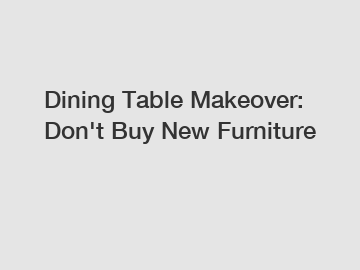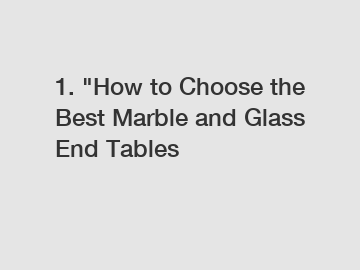Wicker is a term that describes an ancient furniture making practice, used to craft furniture and home accessories. Wicker has made a stylish revival in recent years, becoming the forefront of bohemian-chic interior trends.
Because wicker has been around for so long, there is a wealth of vintage pieces available on the second-hand and antique market.
This is a terrific way of sustainably sourcing new furniture for your living space, as it means you can attain a limited, unique piece while keeping items in circulation, reducing waste and unnecessary production.
In this article, we break down all the essential facts that will aid you in your search for stunning antique wicker furniture.
Here is How To Identify Vintage Wicker Furniture
Wicker furniture refers to any piece of furniture that is woven from synthetic or natural materials into intricate designs and patterns.
Vintage wicker furniture from the 17th to mid-20th centuries is highly sought after by collectors and interior designers alike for its beautiful and elaborate craftsmanship.
Here's how to identify vintage and antique wicker pieces.
Look at the materials
The materials used can help date a piece of wicker furniture. Early wicker was woven from natural plant materials like cane, rattan, willow, straw, and bamboo.
Synthetic wicker was introduced in the late 19th century by companies like the Cyrus Wakefield Rattan Company.
Vintage pieces will be made from natural cane-like materials rather than modern synthetic wicker.
Examine the weaving technique
The basket weaving technique used also helps determine the age of vintage wicker furniture.
Hand-woven and hand-braided wicker with intricate weave patterns indicates an antique piece while more uniform weaving can signal a newer mass-produced piece.
Look for complex braided patterns, varied textures, and signs of handcraftsmanship.
Note the style
The style of vintage wicker can also help point to certain eras. For example, Art Deco and Victorian style wicker was popular in the early 20th century.
Pieces from the 17th and 18th centuries feature simpler woven designs. Mid-century modern wicker by designers like Paul Frankl has very sleek, minimalist lines. Researching the styles can help date your antique wicker furniture.
Look for maker's marks
Well-known wicker makers like Heywood Brothers & Company often stamped their work.
Finding marks from vintage manufacturers helps authenticate the age of a piece. Key makers to look for include Wakefield Rattan Company, Heywood Brothers, and McGuire.
Assess condition
The condition of antique wicker furniture helps appraise its age. Older pieces may be faded, worn, or warped but still maintain integrity.
Make sure vintage paint or finishes are consistent with age. Referencing an online appraisal guide can help you judge the condition.
With some sleuthing into materials, construction, style, and condition, both novice furniture enthusiasts and collectors can learn to identify vintage and antique wicker pieces to add chic vintage flair to any space.
Check The Tag
There are 4 common manufacturers of early western wicker furniture:
- Heywood-Wakefield Company
- Dryad Company
- Lloyd Loom
- Whitney and Reed Company
If you find an unmarked piece of wicker furniture, don't worry! You can still identify it by looking at its construction techniques.
Wicker is often woven in a particular style, with some manufacturers using different techniques than others.
Now that you know how to identify vintage wicker furniture, it would be fantastic to understand a brief history of the material.
A Brief History Of Wicker Furniture
Wicker has been around for centuries, dating as far back as ancient Egypt. The craft of wickerwork migrated throughout the Middle East and Europe.
It is believed to have reached Persia and ancient Rome.
Archeologists have uncovered that wicker was frequently employed to create baskets, chairs and boxes.
Wicker is so robust that it has even been found in battle shields, which date back to the first Persian Empire.
During the 19th century, wicker furniture gained tremendous popularity among western society.
Because it was relatively quick and inexpensive to craft, it soon overtook upholstery. Today, wicker is still celebrated for its durability and has since become an aesthetic for interior décor.
The Materials Used To Craft Wicker Furniture
To help you narrow your search for antique wicker items, we have listed the main woven materials that are frequently used for this ancient craft.
Rattan And Cane
It is so common for wicker craftspeople to use rattan that this article may as well be called 'Identifying Vintage Rattan Furniture'. Rattan is adored by weavers as it is easily yielded and manipulated to fortify long-lasting furniture.
Rattan is a variant of the palm plant, a type of vine commonly seen ascending tree trunks and branches throughout southeast Asia.
The rattan plant is amongst the fastest growing materials found throughout nature, and is favoured by many due to how simple it is to sustainably grow and harvest.
There are two components of the rattan plant that are harvested for wickerwork:
-
The Cane: This is a thin interior located within the bark of a rattan plant. Because the cane is incredibly permeable, it requires little treatment after harvesting. Craftspeople favour cane when weaving intricate patterns, due to its tremendous flexibility (also making it comfortable to sit on). You will often discover cane wicker on chairs and stools.
-
The Inner Core: The core often requires more TLC than the cane, when harvesting. It is highly versatile and hard-wearing. Historically, the core has been harvested for basketry, a tradition which is still upheld today.
Bamboo
Additional resources:Outdoor Living: Garden Sofa Set Exporter Showdown
Where can I find the best deals on cheap plastic chairs for sale?What to Consider When Buying Black Marble and Chrome Coffee TableEssential Questions to Ask Before Buying Outdoor FurnitureHarvesting Equipment | John Deere USWhat is the correct way to set up a buffet table?What is the purpose of outdoor furniture?If you want to learn more, please visit our website e-lansure.
Like rattan, bamboo is a rapidly renewing natural material, and is subsequently perfect for eco-friendly production.
Bamboo is additionally championed for its astonishing tensility and longevity, making it great for patio furniture.
When comparing durability, bamboo surpasses most hardwoods, and even steel!
Bamboo also offers an attractive appearance, emanating natural warm tones, making it a popular material for home furnishings.
Willow
Willow wicker is an artisanal craft that is believed to have originated in Kashmir and Jammu.
You may find that antique retailers refer to willow wicker as Kahmiri wicker.
This type of weaving uses willow wood, which is handcrafted to form delicate wicker designs that offer both organic beauty and durability.
Willow wood is highly malleable because it easily retains moisture, making it suitable for constructing extraordinary patterns.
Unlike bamboo and rattan, this material tends to be slightly heavier and suited to withholding excessive amounts of cargo.
Many artisans deem willow a superior fiber for basketry - it is likely that you will discover willow wicker baskets on bikes.
Synthetic Materials
There are several synthetic materials commonly found in more recent wicker items.
At Mojo Boutique, we tend to avoid artificial products as they often contain Volatile Organic Compounds (VOCs) which are proven to have carcinogens and other harmful toxins.
It is worth familiarizing yourself with some synthetics used to create wicker furniture, so you know what to look out for. Here are 3 common synthetics used for wicker:
-
Paper Fibre Rush: In the early s, Paper Fibre Rush (spelt fibre not fiber because it is synthetic) made an appearance, in response to the high demand for wicker furniture. Manufacturers began to adopt this material for the production of their wicker items, as it was seemingly cheaper and easier to produce than naturally grown materials.
-
Lloyd Loom: During this era of rapid capitalization, an American inventor, Marshall Lloyd Loom, patented a specific process called the Lloyd Loom Weave, which involves finely wrapping paper strands around a tensile wire. This is type of wicker is found in many antique pieces that date back to the early 20th century.
-
Resins: Resin wicker is usually found in modern items, specifically outdoor furniture. You will notice that high-density polyethylene (HDPE) is the most popular material used to make artificial wicker, as it does not fade and can easily mimic the appearance of natural substances.
This is not notably hard-wearing, and can easily crack when exposed to heat. It is additionally regarded as 'safe' but scientists have discovered that this material contains estrogenic chemicals which have potentially dangerous effects on fetuses and infants.
Now that you know the common materials used to create wicker furniture, you can easily identify vintage pieces in antique shops or online.
Not only will this help you avoid artificial materials, but it can also help you understand the history of a piece and its origin.
This is why Mojo Boutique sources exclusively handmade items from Indonesia, as the artisans there are particularly skilled at working with this malleable material.
Maybe you don't know why wicker furniture is so popular and why it's been around for centuries - but here are four reasons for it.
4 Reasons Wicker Is Popular
Wicker furniture is undeniably very popular at the moment. Here are some of our favourite aspects of natural wicker:
1. Long-lasting and Versatile
Because natural wickerwork incorporates some of nature's toughest, organic materials (such as bamboo), it is ideal when creating robust, eco-friendly furniture, that works great both indoors and outdoors.
2. Natural Aesthetic
The natural materials used to weave wicker, such bamboo and rattan, offer breathtaking finishes, providing your habitat with sensationally rustic, boho interior.
3. Timeless Design
Wicker has been popular for centuries, making it a truly timeless design. Buying wicker items from an antique furniture store will provide you with an authentic vintage piece that will embellish your space with character and elegance.
4. Adds Texture
Wicker furniture incorporates the artistry of ancient weaving practice, which allows you to invite remarkable designs and patterns into your home. This builds texture throughout your interior, and helps you to add the finishing touches to your décor.
Frequently Asked Questions
If you've read through the information above and still have questions about identifying vintage wicker furniture, you're in the right place.
In this section, we will answer some frequently asked questions to help you in your quest for identifying vintage wicker furniture.
How can I determine the age of wicker furniture?
The age of wicker furniture can be determined by looking at certain features.
The first thing to look for is the style and design of the item. If it follows traditional weaving styles and motifs, it's likely to be a vintage piece. You can also check for marks or stamps on the underside of the item, which may indicate its maker and the year it was produced.
If you're still unsure about whether a piece of wicker furniture is a modern or vintage item, an online appraisal service may be able to help you out.
What types of wicker furniture were popular in different time periods?
Wicker furniture has been around for centuries and was popular in many different eras. In the 17th century, wicker furniture had a heart patterned design common amongst English country style pieces.
During the Victorian period, peacock chairs were a popular choice for both indoor and outdoor spaces. In the 20th century, metal chairs with wicker seats became a popular choice, as did ratt an and bamboo furniture.
In the s, wicker furniture was often used as a lightweight alternative to heavier wooden pieces. In more recent times, modern wicker furniture has become popular due to its flexibility and ability to fit into many different types of home décor styles.
To ensure that you are buying an authentic vintage wicker piece, it is important to look for signs of superior quality during the inspection process. The furniture should have a hardwood frame, and the rattan chair should have been crafted with intricate weaving techniques. If the piece appears to be held together with glue or nails, it may not be genuine.
How can I differentiate between genuine vintage wicker and reproductions?
When it comes to differentiating between genuine vintage wicker and reproductions, there are a few key factors to consider.
First of all, the material used for the furniture is an indicator of its age. Vintage wicker pieces are usually made with natural rattan or bamboo that has been hand-woven into intricate patterns.
Modern pieces often use materials such as aluminum frames, plastic weaving, and synthetic fibers. Furthermore, modern pieces often have a glossy finish that is not seen in genuine vintage pieces.
In addition to visually inspecting the furniture, you can also look for markings or stamps on the underside of the piece to help determine its age.
Conclusion
Identifying vintage wicker furniture can be a fun and rewarding process.
By understanding the characteristics, age indicators, popular styles, markings, and differences between genuine vintage and reproductions, you can become more knowledgeable in identifying these pieces.
Utilizing resources such as books, online forums, and experts can also be helpful in your quest. Remember to take your time and thoroughly examine the furniture to make accurate identifications.
With practice and research, you'll become an expert in identifying vintage wicker furniture.
For more Woven Rope Dining Set Exporterinformation, please contact us. We will provide professional answers.












Comments
All Comments ( 0 )